Whether you’re a frequent flyer or rarely use airplanes to travel, you may find rules for security screenings, carry-ons and checked bags confusing. One of the biggest causes of stress when traveling is going through security and making sure you’re following all the rules.
Our helpful guide to TSA screenings and carry-on rules will help ease the stress. You’ll be prepared if you know in advance what is expected.
TSA Security Screening
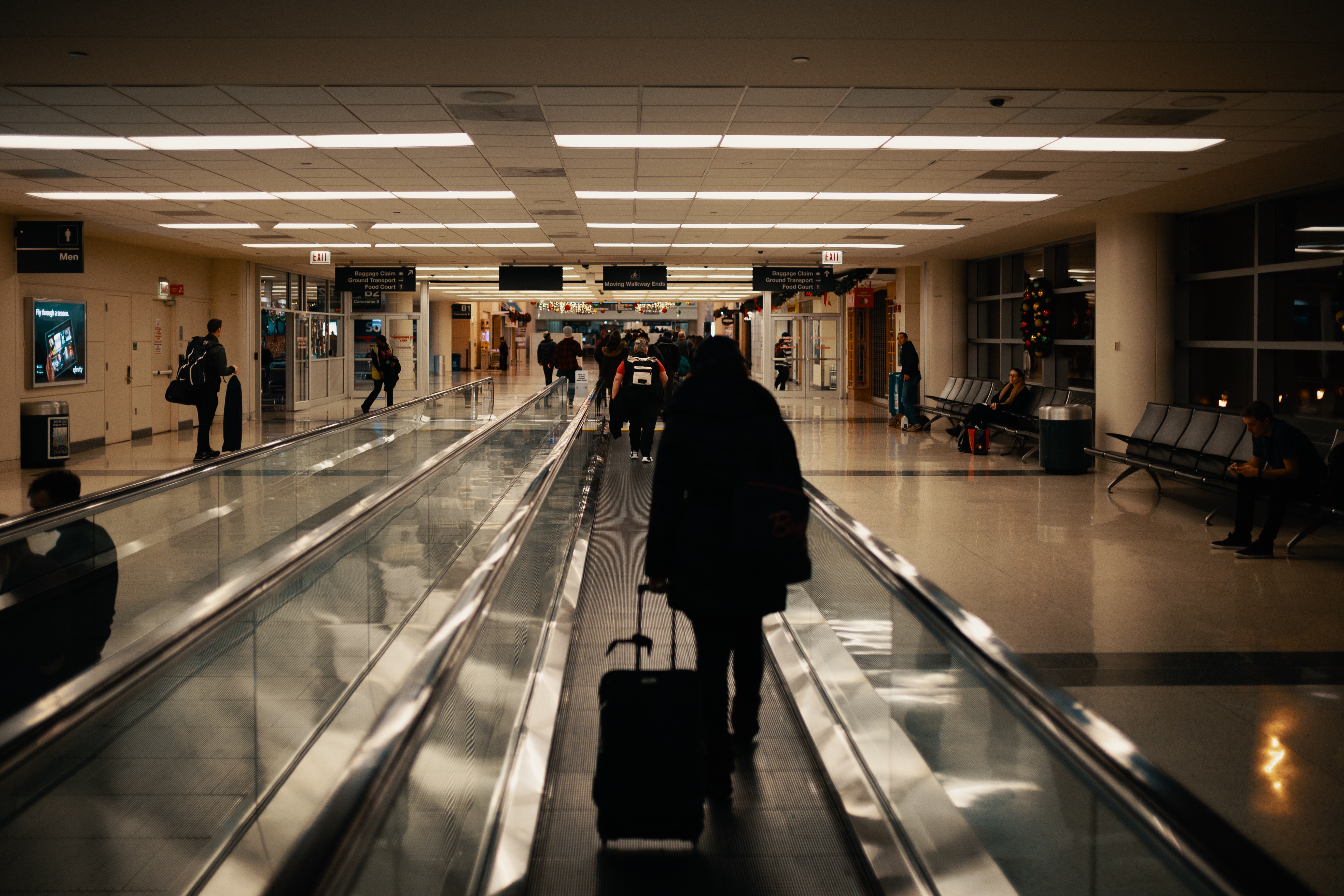
Everyone wants to get to their gate at the airport without unnecessary delays, but TSA screening has become a part of the flying process for most people. The agency does have a TSA PreCheck program that allows people to get through screening lines with waits of five minutes or less for a five-year $85 membership. However, most people go through the sometimes time-consuming regular line.
When you are going through a TSA screening line, you can save yourself a lot of time by making sure that your carry-on baggage does not contain any prohibited items, particularly if you’re using packing tips so you only need a carry-on bag. Many delays in TSA lines are caused by people trying to transport things that should have been stored in checked baggage.
While there are many essential carry-on items to bring with you, make sure you know what you can and cannot bring in carry-on bags before you arrive at the airport.
Faster and Easier Security Screening
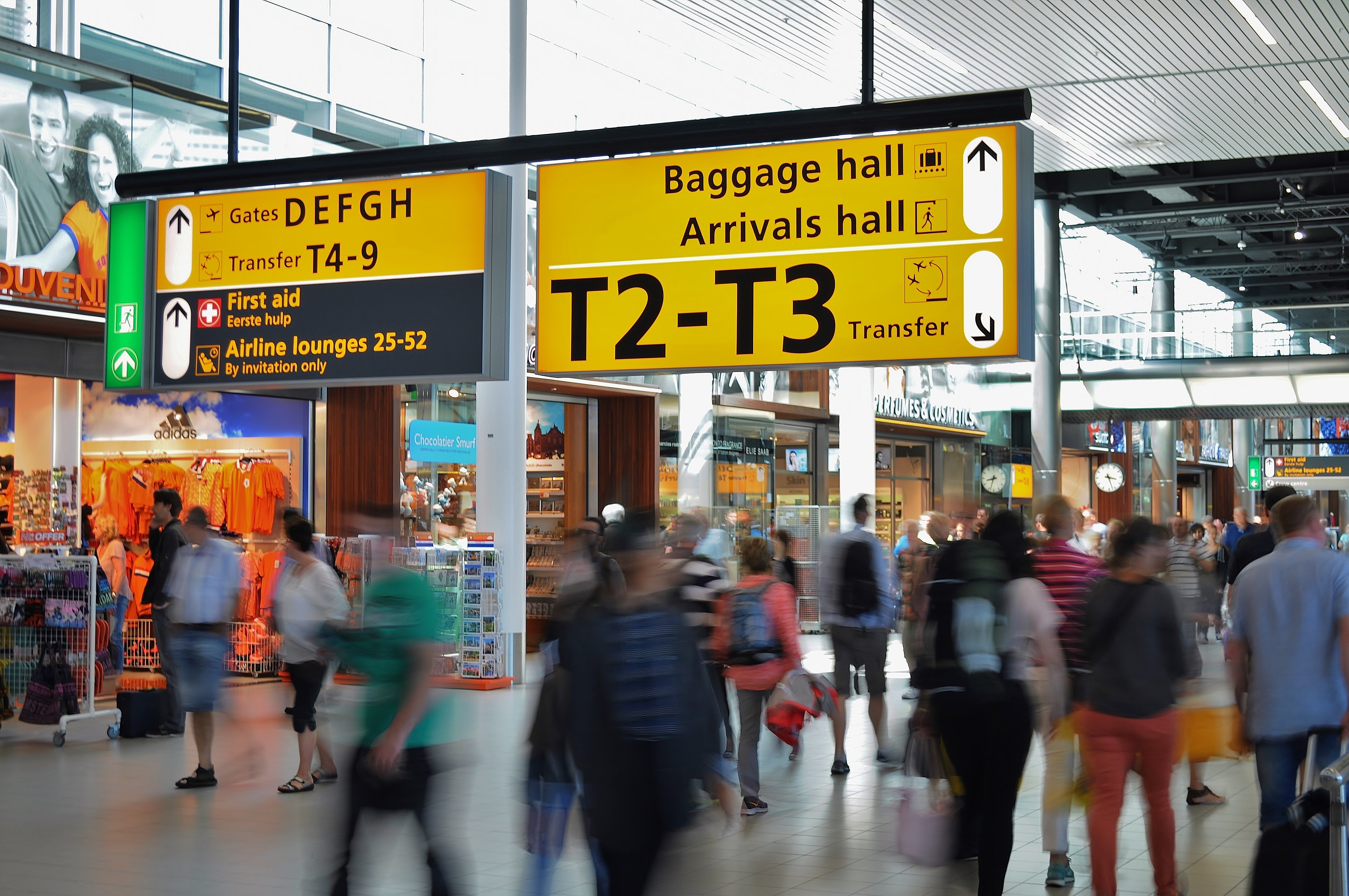
Following carry-on rules will help you get through faster. However, be aware of how TSA screening works. That way, if an issue does arise with your bags, you’ll still save yourself a little bit of time.
- Belts: You will also need to remove your belt if it has a metal buckle. Consider wearing a belt with no metal, or wear pants that don’t require a belt to avoid needing to remove and put back on your belt. Also, you can temporarily store your belt in your carry-on bag and put the belt on after security if you want to avoid dealing with it in the line.
- Shoes: You will need to remove your shoes when going through security. You can save time and effort by wearing shoes that are easy to slip on and off as opposed to other footwear like lace-up boots that are difficult to remove and put back on.
- TSA-approved luggage: Some luggage is designed specifically for faster movement through the TSA. This luggage will have special pockets for your laptop that do not require you to remove your computer from the luggage. They will also have easy access pockets for liquids, so you can quickly remove the liquids if needed.
Liquid Rules
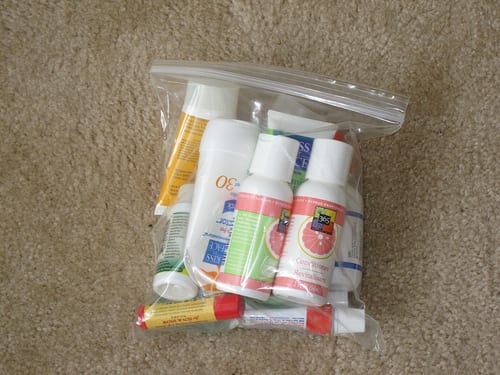
Undoubtedly one of the most common sources of confusion among TSA carry-on rules concerns liquids being brought aboard airplanes. The TSA requires additional screening for any liquid, aerosol, gel, cream or paste.
- Sizes: Liquids are limited to travel-sized containers that are 3.4 ounces (100 milliliters) or less.his can be a major hold up as people will often bring normal sized toothpaste tubes, contact lens solution, or sunscreen bottles. If you have normal-sized containers, you’ll have to remove them and throw them away when the TSA pulls you aside. All containers should be stored in a single quart-sized resealable bag.
- Storage: You should put all liquid items in a small bag that is easy to access in your carry-on baggage. When liquid is in a container that is more than 3.4 ounces or 100 milliliters, put it in your checked baggage. The TSA does have exemptions for medications and infant or child nourishment.
- Duty-free storage: On Inbound International Flights, a person can carry duty-free liquids in secure, tamper-evident bags. The liquids can be more than 3.4 oz. if the liquids were purchased internationally and the person is traveling to the United States with a connecting flight. The liquids must show no signs of tampering, and the person needs to have the original receipt for the liquids purchased within the last 48 hours.
Carry-On Rules vs. Checked Rules
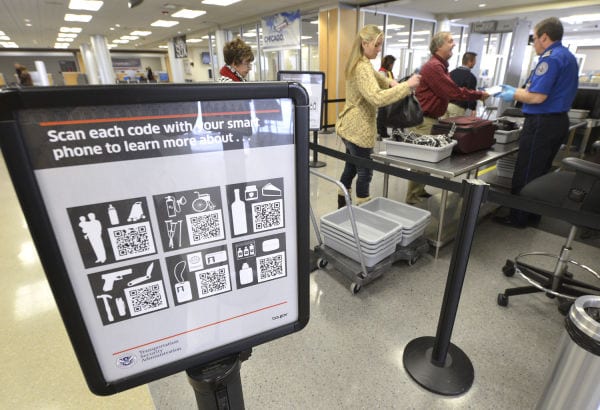
Certain items are allowed in both carry-on rules and checked bags, some items are prohibited in both and some items are allowed in one but not the other. Some commonly asked-about-items on the TSA list include:
- Alcoholic Beverages: Allowed in carry-on baggage if it’s less than 3.4 ounces. Allowed in checked baggage as long as the beverage contains less than 70 percent alcohol. You may not check more than 5 liters, and all alcohol containers must be unopened. Alcoholic beverages with 24 percent or less alcohol don’t have limitations in checked bags.
- Ammunition: Only allowed in checked baggage, but ask your airline about its specific rules as some may have additional rules or fees.
- Antlers: Allowed in all luggage, but check with the airline to make sure that they will fit in the overhead bin or underneath the seat if you decide to have them as carry-on luggage.
- Arc Lighters, Plasma Lighters, Electronic Lighters, E-Lighters: Not allowed in any luggage.
- Baby Carrier: Allowed in all luggage, but check with your airline to see if it will fit under a seat or in the overhead bin if you want to bring it as carry-on luggage.
- Baby Formula: Allowed in all luggage. Formula, breast milk and juice are allowed in reasonable quantities, but the items should be removed from the carry-on bag to be screened separately.
- Baby Powder: Allowed in all luggage. Powder-like substances of more than 12 ounces or 350 milliliters need to be placed in a separate bin for X-ray screening. Some of these substances may need to be opened and receive extra screening.
- Belts, Clothes and Shoes: Allowed in all luggage.
- Bottled Water: Carry-on rules say you can have bottled water, but it has to be less than 3.4 ounces. You can also bring an empty bottle and fill it once you’re through security. Bottled water is also fine in checked luggage.
- Box Cutters: Only allowed in checked baggage.
- Child Car Seats: Allowed in carry-on rules, but check to make sure it will fit in the overhead bin or under the seat. Also allowed in checked baggage.
- Electronic Cigarettes and Vaping Devices: Allowed in carry-on baggage, but not allowed in checked baggage.
- Electronic Toothbrush: Allowed in all baggage.
- EpiPens: Allowed in all baggage.
- Firearms: Only allowed in checked baggage. All firearms must be unloaded, packed in a locked hard-sided container and declared to the airline at check-in.
- Flammable Liquid, Gel, or Aerosol Paint: Not allowed in any luggage.
- Fresh Fruits and Vegetables: Although these are generally allowed in all baggage, certain locations have restrictions on what can be brought to or taken from the area. Some areas with special rules include flying from Hawaii, Puerto Rico or the U.S. Virgin Islands to the U.S. mainland.
- Fresh Meat and Seafood: Allowed in all baggage, but may require additional screening if you take it in your carry-on bag. f
- Frozen Food: Allowed in all luggage, but frozen food carried on the plain may need extra screening.
- Insulin Supplies: Allowed in all luggage, but take care to clearly identify it.
- Lithium batteries with 100-watt hours or less in a device: Allowed in all luggage.
- Lithium batteries with more than 100-watt hours: Allowed in carry-on luggage with airline approval, but passengers may only have two spare batteries each. Not allowed in checked luggage.
- Multi-tools: Allowed in all luggage. However, in the carry-on rules for multi-tools, tools with knives are not allowed and scissors cannot be longer than four inches.
- Nail Clippers: Allowed in all luggage.
- Nail File (metal): Allowed in all luggage.
- Portable Oxygen Concentrators: — Allowed in all luggage, but review the list of Portable Oxygen Concentrators that meet FAA specifications for inflight use if you decide to put it in your carry-on.
- Self-Defense Sprays: — Only allowed in checked baggage, and it is limited to 4 fluid ounces or 118 milliliters. The spray must have a safety mechanism to prevent accidental discharge. Sprays containing more than 2 percent by mass of tear gas are not allowed.
- Shampoo: Allowed in all luggage, but shampoo going in a carry-on must meet liquid requirements.
- Tablets: Allowed in all luggage.
- Tools: Power tools and all tools that measure longer than 7 inches from end to end when assembled are prohibited in carry-on baggage. Put them in your checked luggage instead.
When you are planning on traveling with any of the items listed above, we recommend contacting the airline to make sure that there will not be any issues involved in bringing your item on the aircraft.
Items Requiring Airline Approval
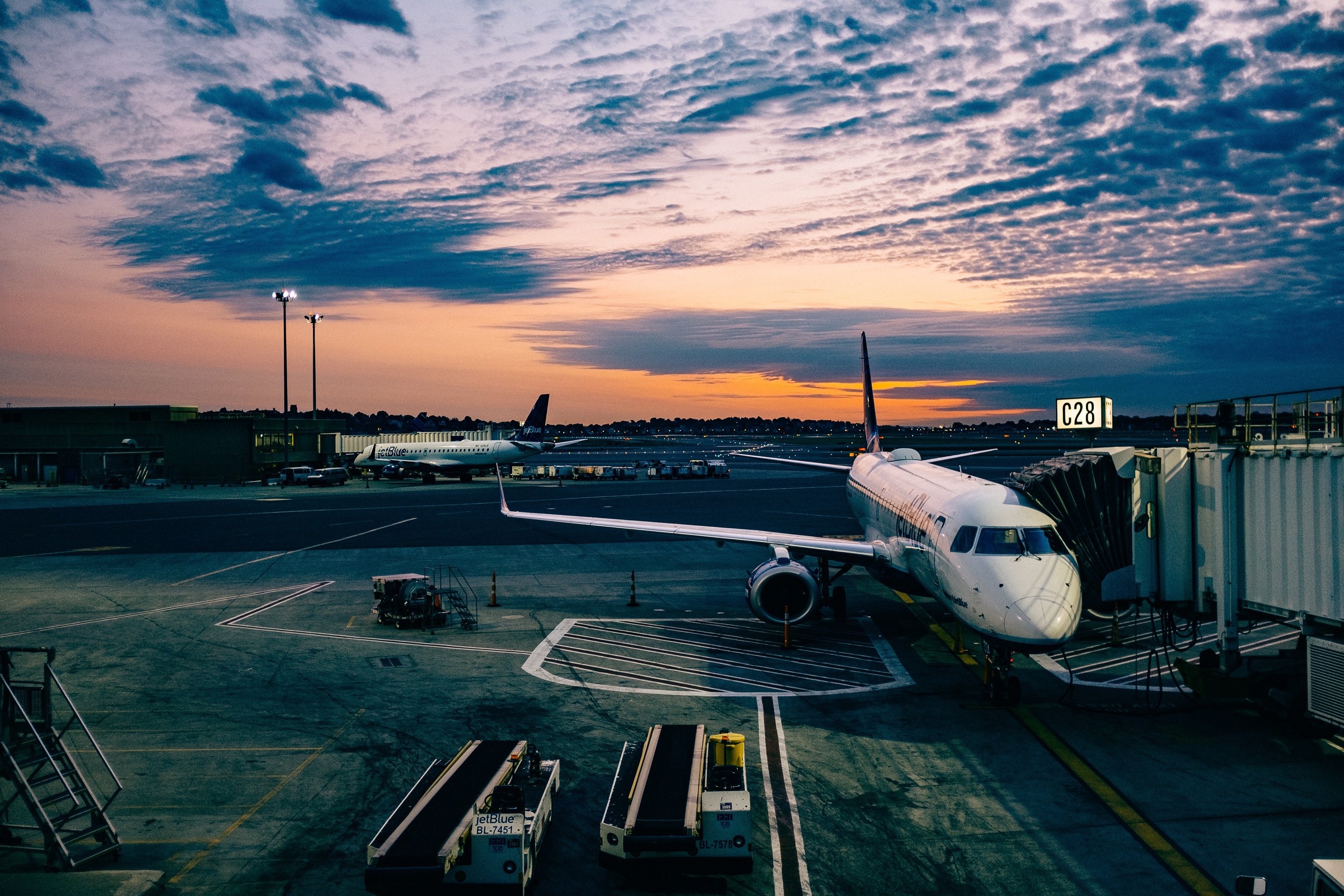
The TSA does not specify whether certain items can be transported in carry-on or checked bags. Instead, a traveler must check with an airline when they are carrying one of these items.
Some of the types of items you will have to check with an airline to get approval for transporting include:
- Bicycles
- Drones
- Dry Ice
- Emergency Position-Indicating Radiobeacons (EPIRB)
- Hover Boards
- Metal Detectors
- Segways
- Small Pets
- Solar Panels
- Tents
You need to contact the airline before flying because some airlines may charge additional fees for bringing larger items such as bicycles on planes. Weight limits are common in most of these cases.
Overall, you should follow the carry-on rules to avoid delays in security screening and additional fees from the airlines. Follow the carry-on rules in this article to make your next flight a better experience.